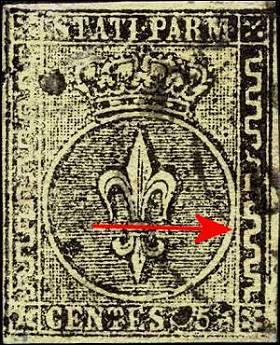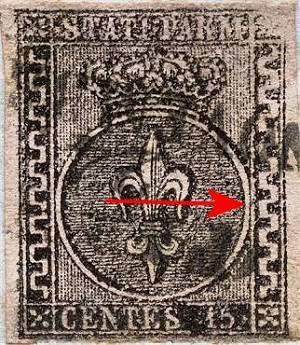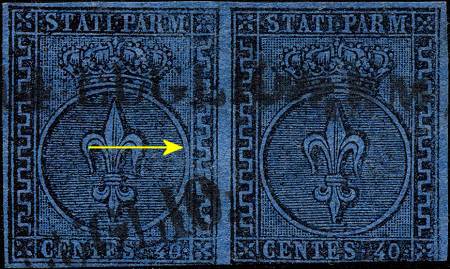To
print the Parma first issue stamps the starting point was a unique minting
die, engraved in brass by Donnino Bentelli, without any value indication.
The several stereotypes needed to prepare a plate of 80 pieces were produced
by duplication from the original minting die. The adopted system was the one
technically defined "galvanic-plastic method". The job was not done
anyway as a real masterpiece, on the opposite! The average quality of the
stamps as everybody knows is quite poor.
The most important defect produced is the one known as "wide greek"
ornament.
It is a thickening of one or both the lateral ornaments of the stamp.
Because also in standard samples the two greek ornaments do have often slightly
different dimensions, we must be careful not to confuse this defect with the
acceptable differences due to the tolerance of these pieces.
This evident variety (both with one or two wide greek ornaments) can be found
on all the values of the first and second Parma issues, on new as well as
on used samples, with the exception of the 5 centesimi of the second issue.
I show here three samples that carry this defect in very evident way (Fig.
1-2-3). In some case (Fig. 1) the greek ornament may be of variable
thickness from narrow to wide.
 |
 |
|
Fig.
1-2:
5 and 15 centesimi with the wide greek ornament to the right
|
|

Fig.
3: the left sample does have
the right greek decoration "wide"